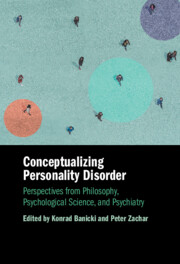 Conceptualizing Personality Disorder
Conceptualizing Personality Disorder A History
from Part I - Historical Perspectives
Published online by Cambridge University Press: 25 June 2025
In this chapter I describe the introduction of a new concept, “personality,” into the language of psychology and psychopathology of the late nineteenth century. Personality was introduced in a clinical–pathological context but was transferred to a psychometric context by American psychologists. In medicine, in the middle part of the twentieth century, although several types of “psychopathic personalities” were described, most of psychopathology was considered personality related. “Personality disorders” came to be seen as treatment-resistant and conceptualized as lying in a borderline region between neurosis and psychosis. In the Diagnostic and statistical manual of mental disorders version III (DSM-III), personality disorders were more thoroughly segregated from the rest of psychopathology. After the publication of the DSM-IV (and the International classification of diseases version 10, ICD-10), psychological scientists began to assert themselves, reinvigorating the old the contrast between a clinical–pathological method and a psychometric, factor-analytic approach as a “categorical” versus “dimensional” debate. More recently, the aspiration to apply factor-analytic psychometrics to psychopathology in general has the potential to reverse the separation introduced in the DSM-III and re-nest psychopathology under personality.
To save this book to your Kindle, first ensure no-reply@cambridge.org is added to your Approved Personal Document E-mail List under your Personal Document Settings on the Manage Your Content and Devices page of your Amazon account. Then enter the ‘name’ part of your Kindle email address below. Find out more about saving to your Kindle.
Note you can select to save to either the @free.kindle.com or @kindle.com variations. ‘@free.kindle.com’ emails are free but can only be saved to your device when it is connected to wi-fi. ‘@kindle.com’ emails can be delivered even when you are not connected to wi-fi, but note that service fees apply.
Find out more about the Kindle Personal Document Service.
To save content items to your account, please confirm that you agree to abide by our usage policies. If this is the first time you use this feature, you will be asked to authorise Cambridge Core to connect with your account. Find out more about saving content to Dropbox.
To save content items to your account, please confirm that you agree to abide by our usage policies. If this is the first time you use this feature, you will be asked to authorise Cambridge Core to connect with your account. Find out more about saving content to Google Drive.